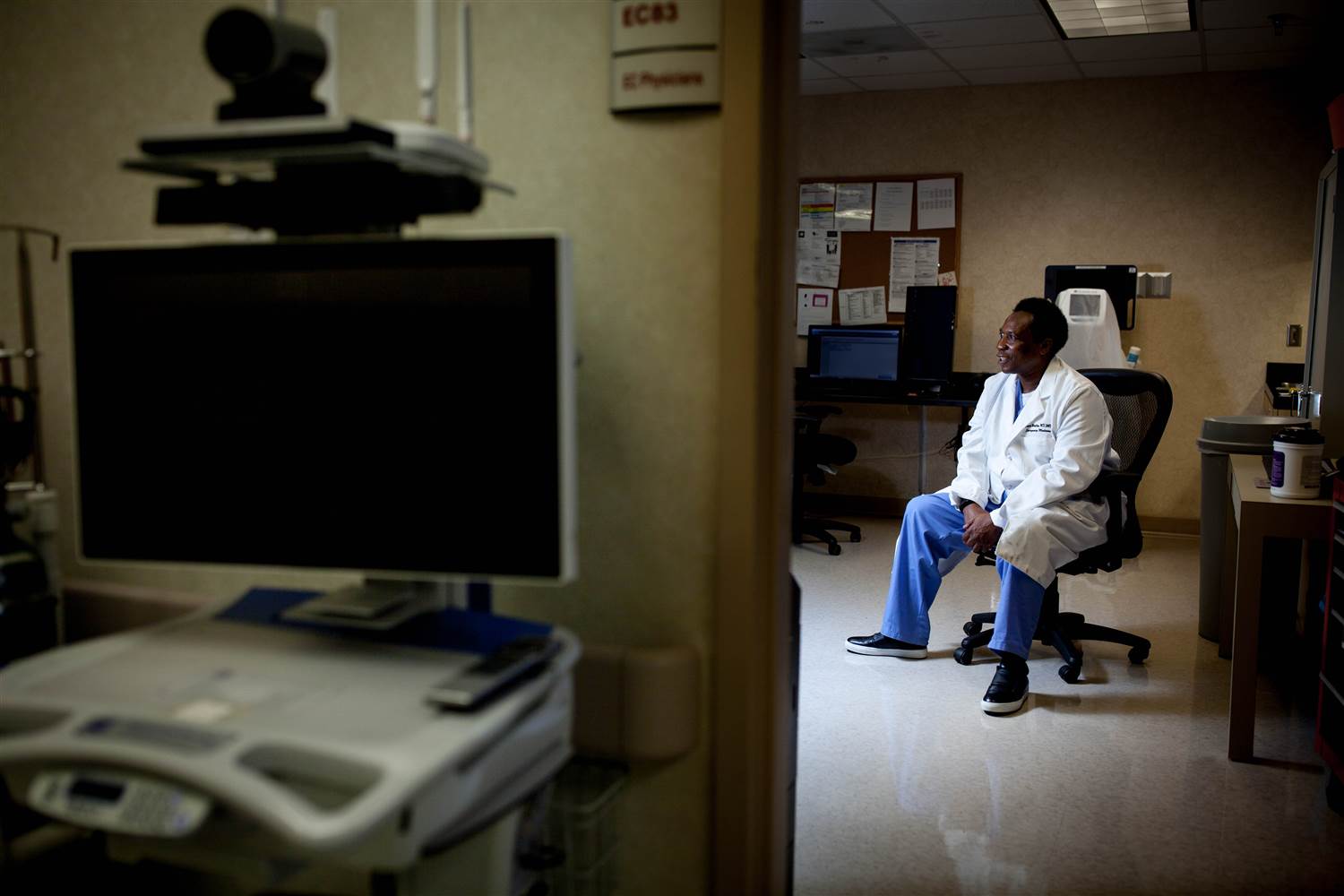
by Corky Siemaszko
It began with an admission from an overdosing patient delivered in what Dr. Gregory Whatley would later recall as “the slightest of a whisper.”
Whatley, a veteran emergency room doctor, had just started the 10 p.m.-to-6 a.m. shift at Navicent Health Medical Center in Macon, Georgia, on June 4 when a barely conscious young women arrived by ambulance.
Whatley immediately administered the anti-overdose drug Narcan, but it had no effect on the gasping woman. So he worked a tube down her throat to open up her airway and started administering fluids and sedatives.
“Right around the same time, another woman came in with the same symptoms,” Whatley said. “I was so busy with my patient I did not give it much thought.”
Four hours later, his patient suddenly came to and tried to yank the breathing tube out of her throat.
“We were able to calm her down,” the doctor said. “So I asked her: ‘What happened to you? What did you take?’ And in the slightest of a whisper, she said she took a Percocet.”
Percocet is the brand name of a drug that’s a combination of oxycodone and acetaminophen.
Whatley knew that it would take more than one Percocet to cause this kind of overdose. What he didn’t know was that, within days, there would be 40 more cases like this woman’s — and that six of them would end in death.
So Whatley decided to admit the woman because “she had some really strange lab values and her white blood-cell count was very high.”
Around the same time, Whatley learned from the other doctor in the emergency room that he was treating another woman who had also overdosed.
“Somewhere along the way, she mentioned a yellow pill,” Whatley said.
But it was around 2 a.m., and Whatley had other patients who needed his attention. There was no time to do the math.
It wasn’t until Whatley returned for his next shift in the ER on June 5 that he realized there might be a connection.
“A 21-year-old overdose patient was brought in, and he told the paramedics he had taken a Percocet,” Whatley said. “When I heard that, I said to myself, ‘Something is wrong.'”
So about 20 minutes into his shift, Whatley called the Georgia Poison Center and sounded the alarm, state officials confirmed.
And that was the start of 14 desperate days during which law enforcement and health officials across Georgia would find themselves struggling to identify and contain an epidemic of overdoses that began when a stranger came to Macon selling a batch of little yellow pills.
‘The caseload tripled in two hours’
Gaylord Lopez, director of the Georgia Poison Center, was ready to call it a night when Whatley’s call came in.
“Normally, I would get texted if anything was going on, but on the evening in question, I got a call from a senior specialist at the office,” Lopez said. “I was told by a specialist who took the call: ‘We’ve got an unusual case of five people all presenting the same way. The doctor is saying this is unusual.'”
Lopez immediately sat up in bed.
“I said, ‘This is a problem,'” he recalled. “This hospital has five cases. What if there are others? So I told my specialist to look at our maps and databases to identify four or five other hospitals in that area. I said, ‘Let’s just check and see if anyone else has received any similar cases.'”
One of the first calls the specialist made, Lopez said, was to the Houston Medical Center in Warner Robins, about 20 miles south of Macon.


